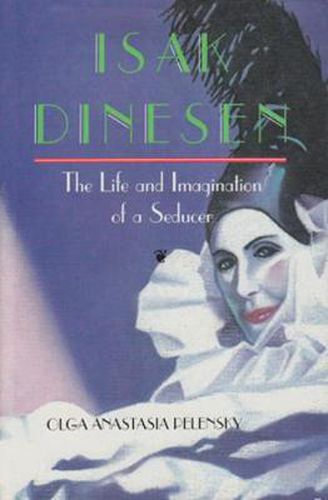Readings Newsletter
Become a Readings Member to make your shopping experience even easier.
Sign in or sign up for free!
You’re not far away from qualifying for FREE standard shipping within Australia
You’ve qualified for FREE standard shipping within Australia
The cart is loading…






Born into a Victorian Danish family, Karen Christentze Dinesen married her second cousin, a high-spirited and philandering Baron, and moved to Kenya where she ran a coffee plantation, painted and wrote. She later returned to Denmark, lived through the German occupation during World War II, and became a pivotal figure in Heretica, a major literary movement that flourished in Denmark after the war. By the time of her death, Dinesen was internationally known, particularly for her work Out of Africa . For this biography, Pelensky has uncovered papers in libraries and private collections and interviewed sources in Africa, Denmark and England to help put the pieces of Dinesen’s life together. Her father’s outspoken sympathy of the plight of the American Indians, his suicide and the effects of his personal anguish as a failed adventurer are illuminated as major forces on Dinesen’s imagination. The Danish history of romance and masquerade and the tradition of pantomime are also explored as themes that recur in Dinesen’s work.
$9.00 standard shipping within Australia
FREE standard shipping within Australia for orders over $100.00
Express & International shipping calculated at checkout
Born into a Victorian Danish family, Karen Christentze Dinesen married her second cousin, a high-spirited and philandering Baron, and moved to Kenya where she ran a coffee plantation, painted and wrote. She later returned to Denmark, lived through the German occupation during World War II, and became a pivotal figure in Heretica, a major literary movement that flourished in Denmark after the war. By the time of her death, Dinesen was internationally known, particularly for her work Out of Africa . For this biography, Pelensky has uncovered papers in libraries and private collections and interviewed sources in Africa, Denmark and England to help put the pieces of Dinesen’s life together. Her father’s outspoken sympathy of the plight of the American Indians, his suicide and the effects of his personal anguish as a failed adventurer are illuminated as major forces on Dinesen’s imagination. The Danish history of romance and masquerade and the tradition of pantomime are also explored as themes that recur in Dinesen’s work.